PDF chapter test TRY NOW
The human nervous system is a complex network of specialised cells that allows us to sense, understand, and act on our surroundings. The brain handles most executive functions, whereas the spinal cord serves primarily as an information highway connecting the brain to numerous cells throughout the body.
Electrochemical signals facilitate bidirectional communications by connecting the circuits of the body and the brain.
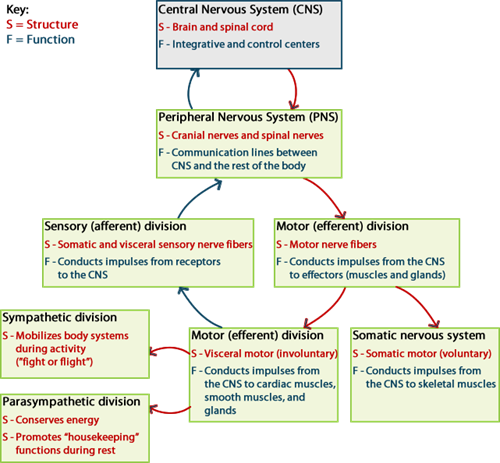
Classification of nervous system
The nervous system is divided into two categories:
1. The central nervous system
2. The peripheral nervous system
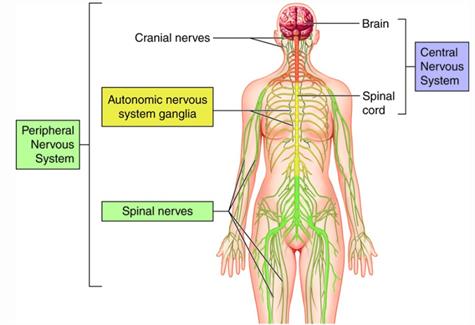
The picture showing the divisions of the nervous system
Central nervous system (CNS)
The human central nervous system (CNS) is a network of about \(100\) billion nerve cells that regulates our activities, senses our surroundings, and defines who we are. Neurons are the CNS's functional units, and they are unique in their ability to transmit and store information.
CNS of vertebrates and invertebrates
Invertebrates primarily comprises a solid ventral nerve cord with ganglia. In some cases, brain may present.
The brain and the spinal cord are the two main elements of the CNS of vertebrates. The brain is located in the cranium/skull, and the spinal cord is found in the vertebral column.
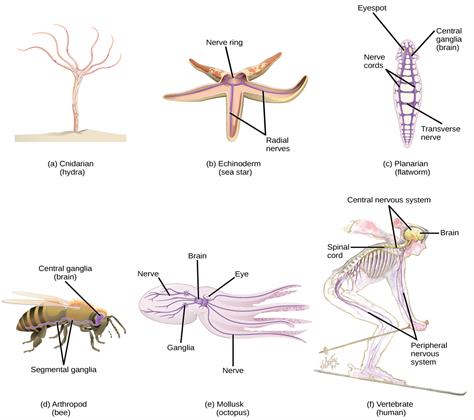
Types of nervous system in animals
Is the CNS in control of the major decision-making process?
Yes, in organisms, the central nervous system is the body's information processing, control, and coordination unit. It acts as the body's control and coordinating centre, transmitting and receiving information to and from muscles, glands, organs, and other body systems via the peripheral nervous system.
Our thoughts, movements, emotions, and desires are all controlled by the central nervous system. It also regulates our respiration, heart rate, hormone secretion, and body temperature.
Neurons, glial cells, axons, membranes, the neural tube, and the ventricular system are all important neuroanatomical features of the CNS. Neurons, synaptic transmission, and neurotransmitters are all important neurophysiological characteristics of the CNS.
- Nuclei are groups of neurons in the central nervous system.
- Ganglia are groups of neurons that exist outside of the central nervous system.
Peripheral nervous system (PNS)
The PNS is made up of all of the body's nerves connected to the CNS (brain and spinal cord).
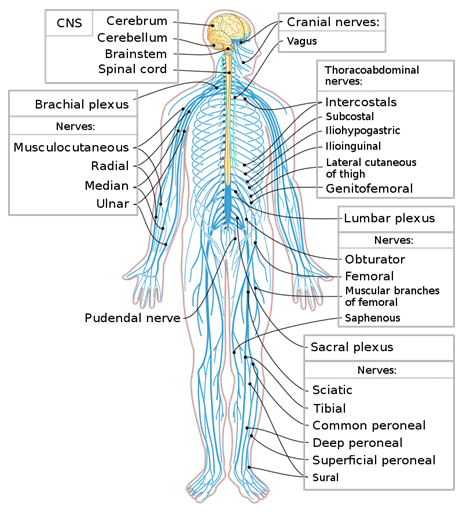
Picture showing the nerves of CNS and PNS
Cranial nerves arising from the brain and spinal nerves arising from the spinal cord forms the peripheral nervous system. Both cranial and spinal nerves connect different parts of the body to the central nervous system. There are two types of nerve fibres in the PNS.
- Afferent fibres
- Efferent fibres
1. Afferent fibres or sensory division: These fibres carry impulses from tissues or organs to the central nervous system.
2. Efferent fibres or motor division: These fibres carry regulatory impulses from the CNS to the peripheral tissues or organs.
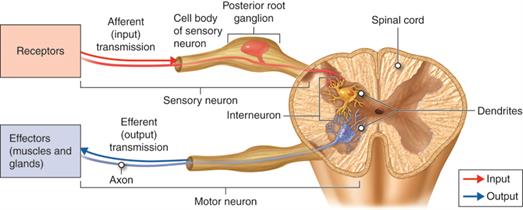
The transmission of signal by afferent and efferent nerves
Nerves from the brain and spinal cord enter the peripheral nervous system. There are \(12\) cranial nerves and \(31\) pairs of spinal nerves in the human body.
Cranial nerves
The cranial nerves are a collection of twelve nerves that emerge from the brain. Each has a distinct sensory or movement function. The cranial nerves have sensory, motor, or mixed functions:
- Sensory cranial nerves allow to see, smell, and hear.
- Motor cranial nerves control muscle movements in the head and neck.
Each nerve has a number assigned to it based on its location in the brain and a name that reflects its function. The cranial nerves in the brain are labelled with Roman numerals ranging from I to XII.
The below picture depicts the twelve cranial nerve fibres names, location and their functions.
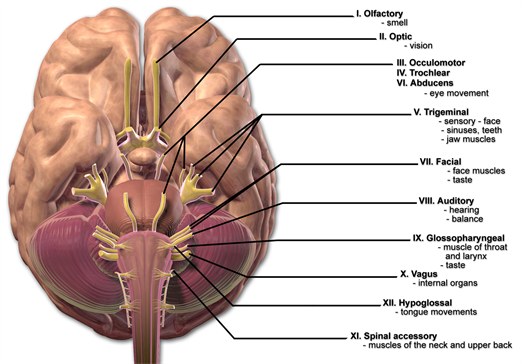
Picture showing the cranial nerves of the brain
Spinal nerves:
In humans, a totally of \(31\) pairs of spinal nerves are there, that emerge from the spinal cord. They are classified according to which regions of the spine they emerge from, such as the cervical, thoracic, lumbar, sacral, and coccygeal spinal nerves.
Spinal nerves are divided into five categories.
- \(8\) pairs of cervical nerves
- \(12\) pairs of thoracic nerves
- \(5\) pairs of lumbar nerves
- \(5\) pair of sacral nerves
- \(1\) pair of coccygeal nerves
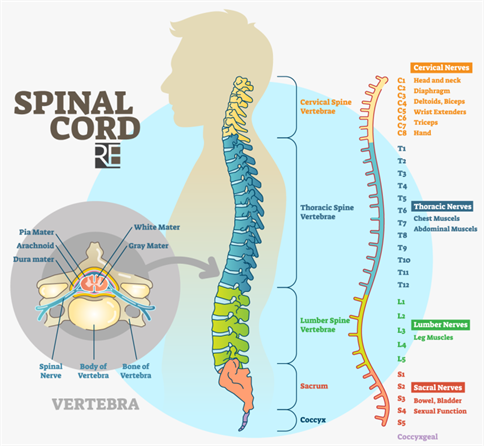
The regions of spinal cord and nerves
Reference:
http://learn.neurotechedu.com/the_nervous_system/
https://en.wikipedia.org/wiki/File:Afferent_and_efferent_neurons_en.svg
https://commons.wikimedia.org/wiki/File:Blausen_0284_CranialNerves.png
https://www.pngjoy.com/preview/f5v3p9k5b4g8u4_spinal-cord-illustration-transparent-png/
https://commons.wikimedia.org/wiki/File:Figure_35_01_01.jpg
https://upload.wikimedia.org/wikipedia/commons/0/0b/NSdiagram.png
https://www.savingstudentsmoney.org/OLI/AnPpost.html
